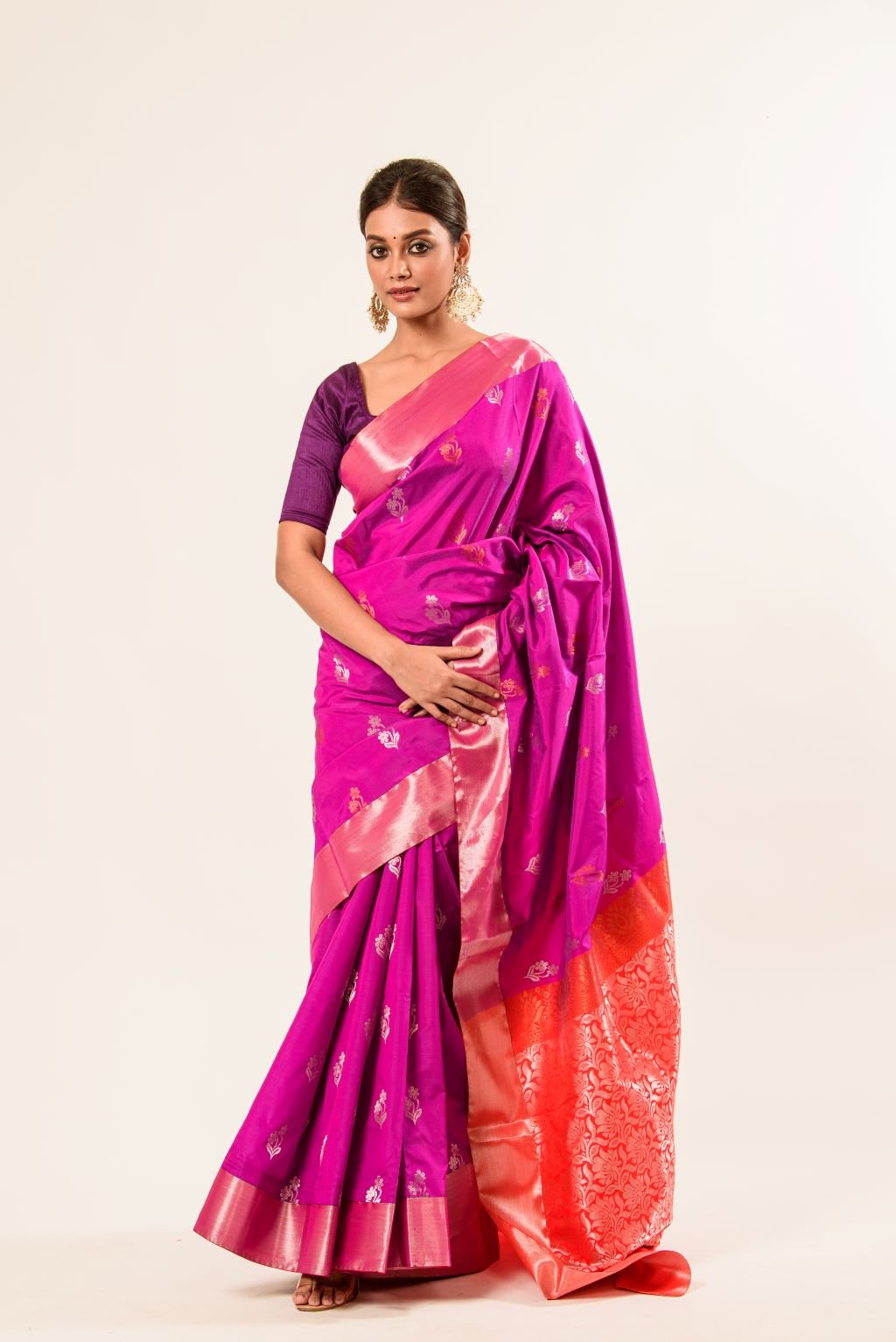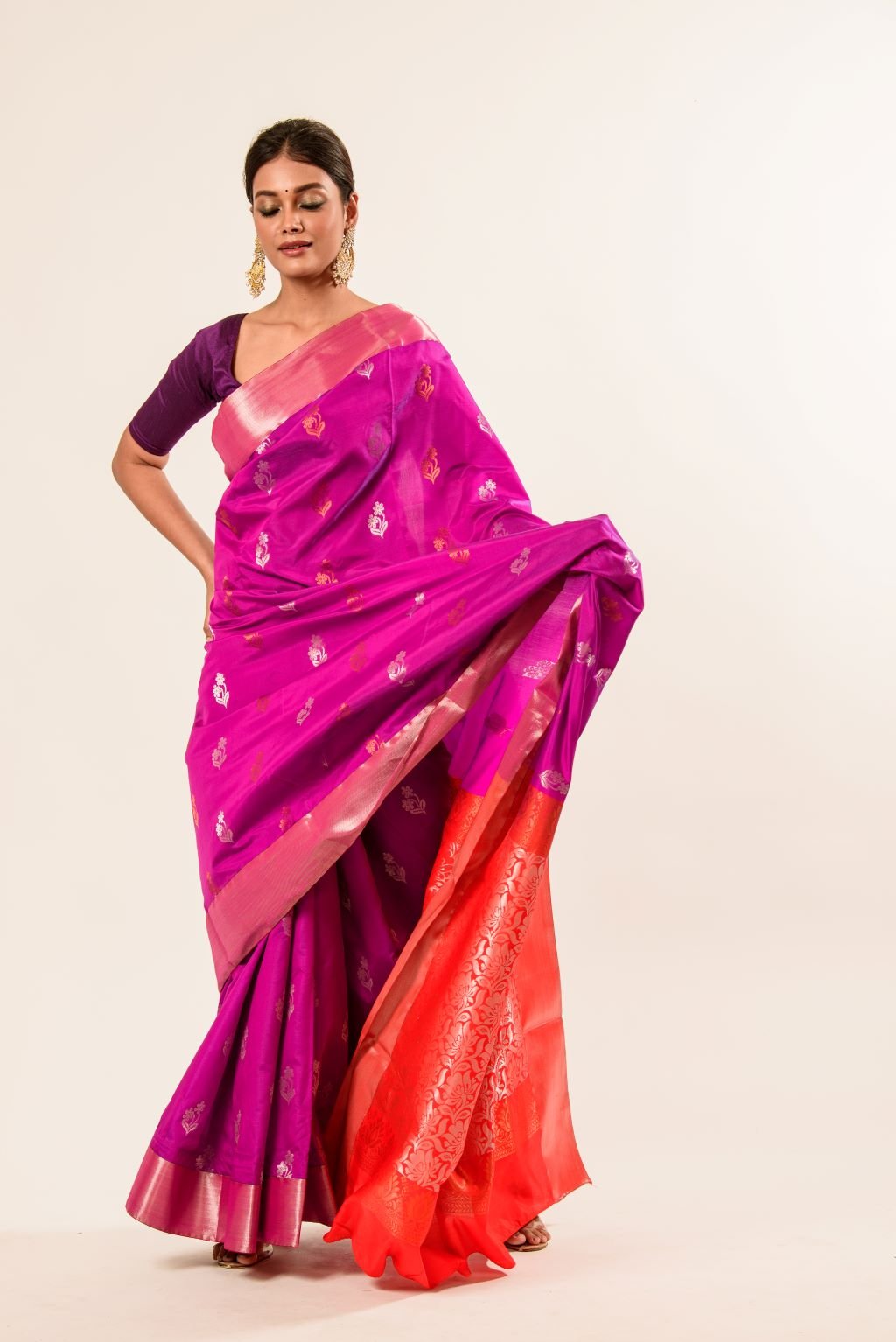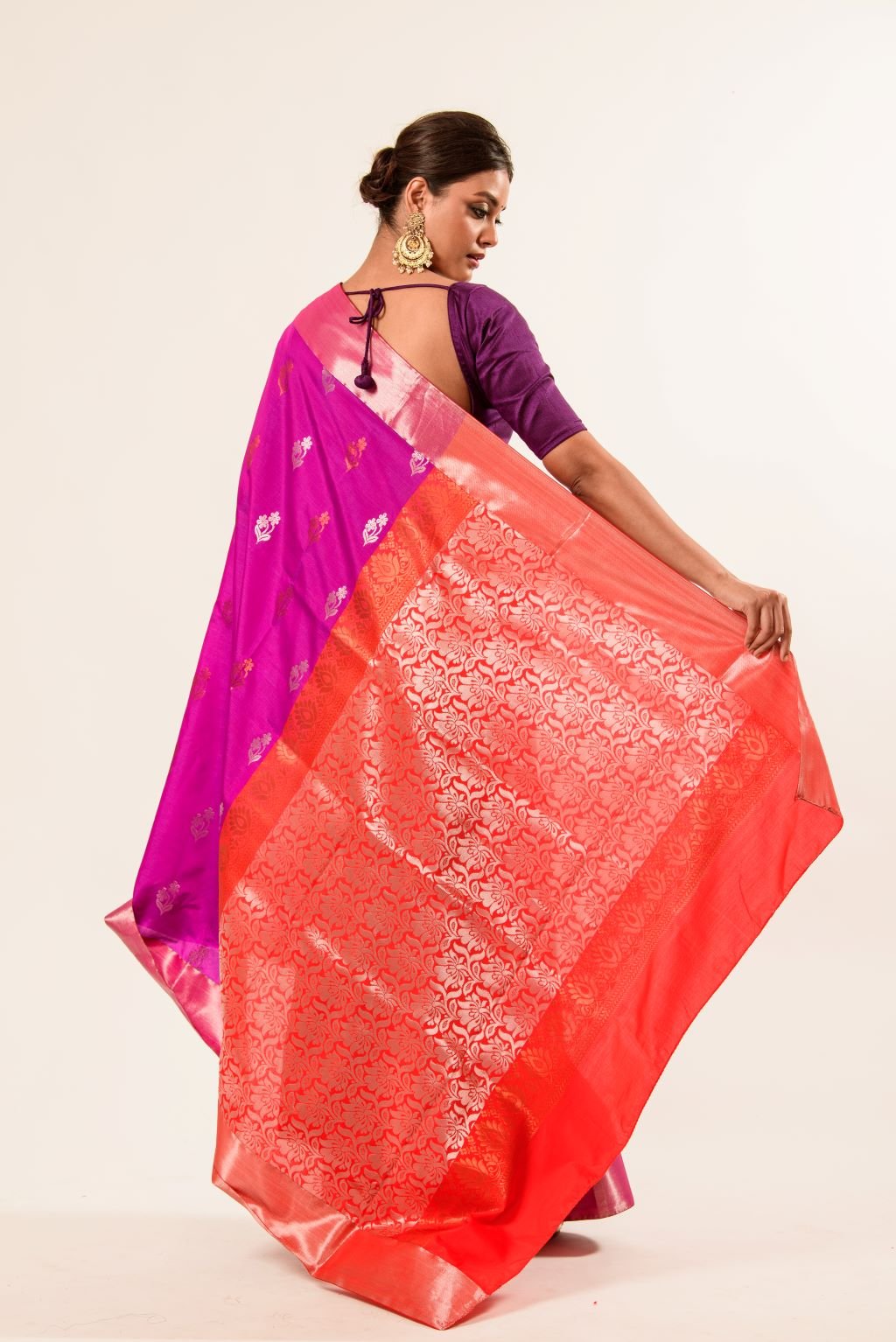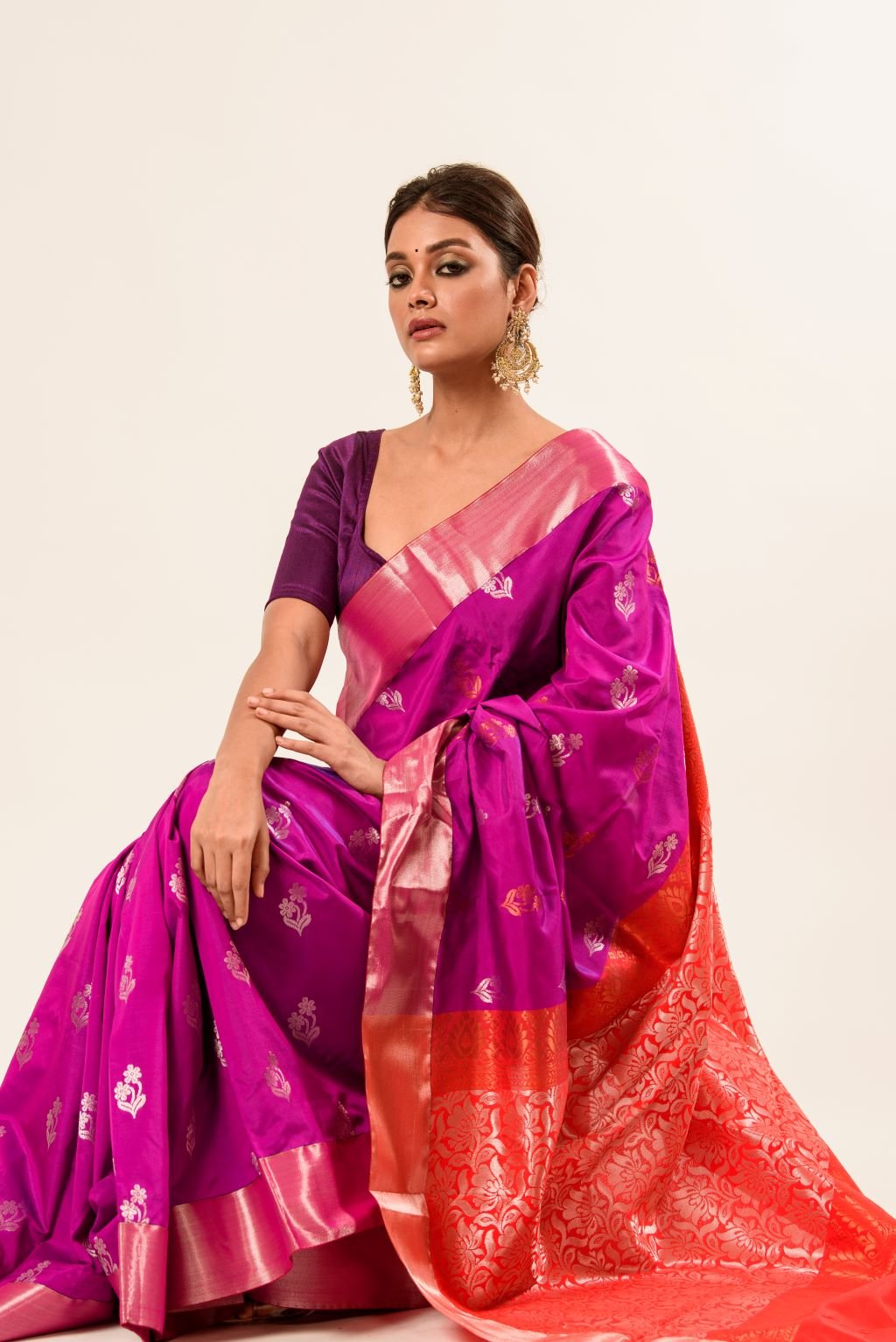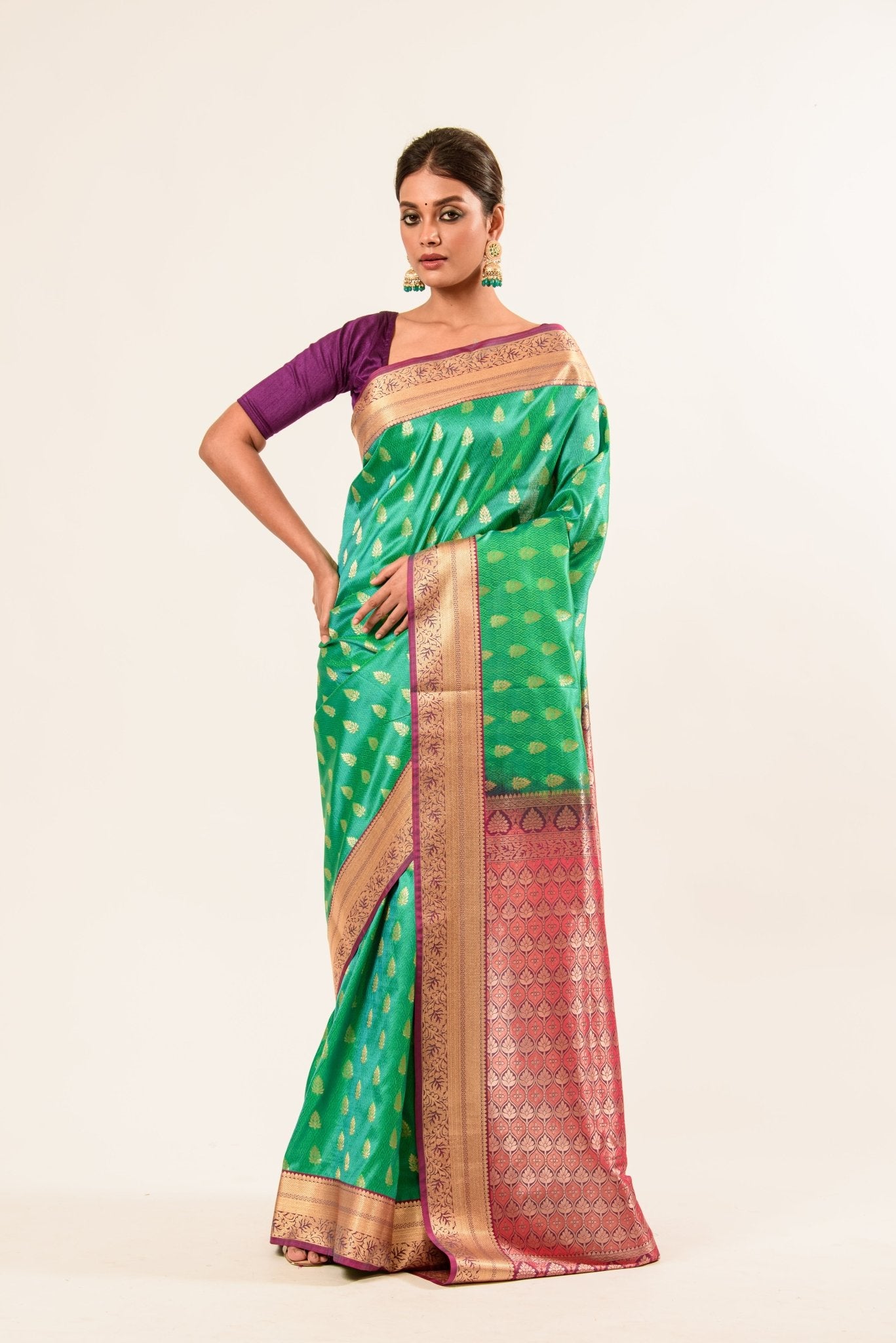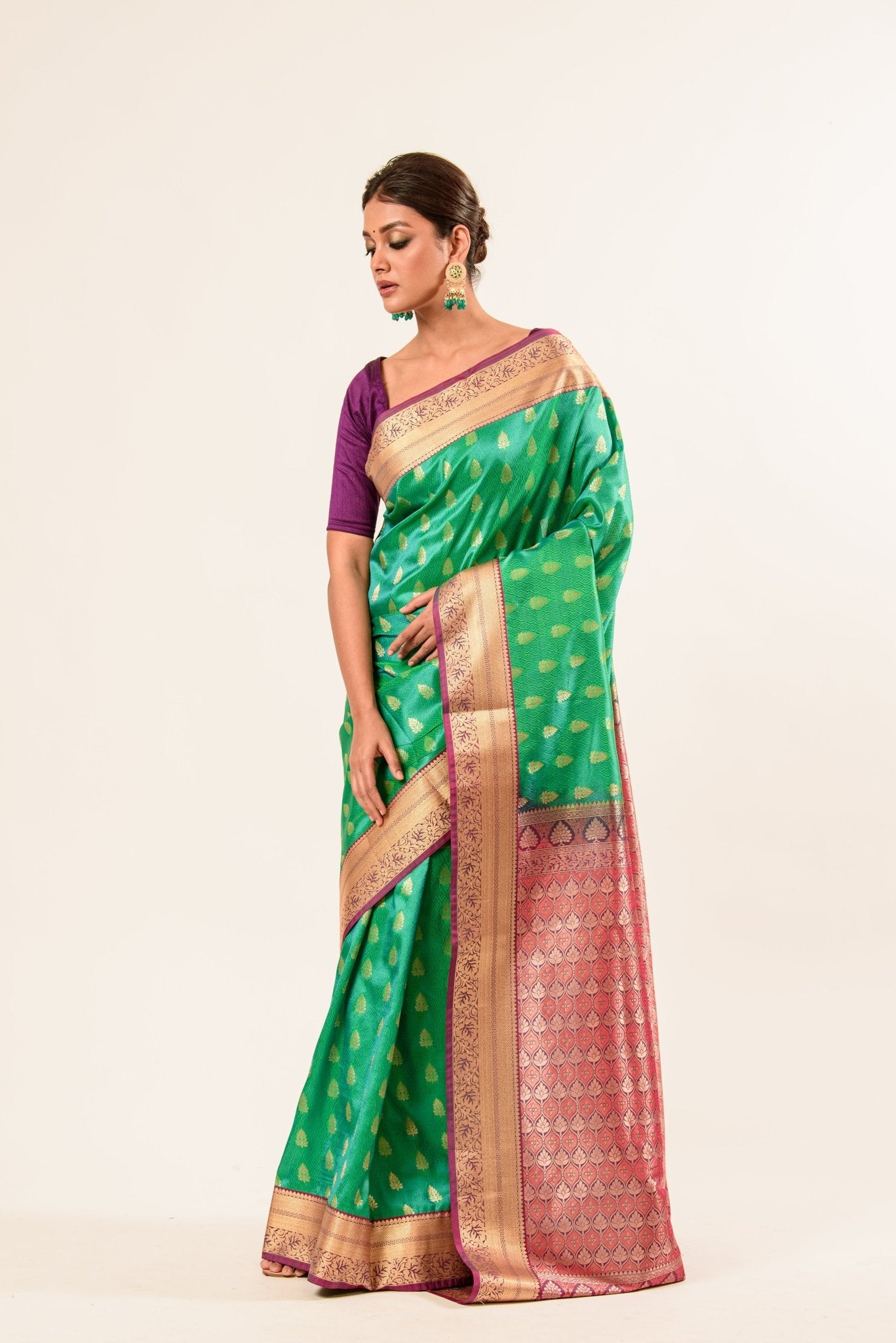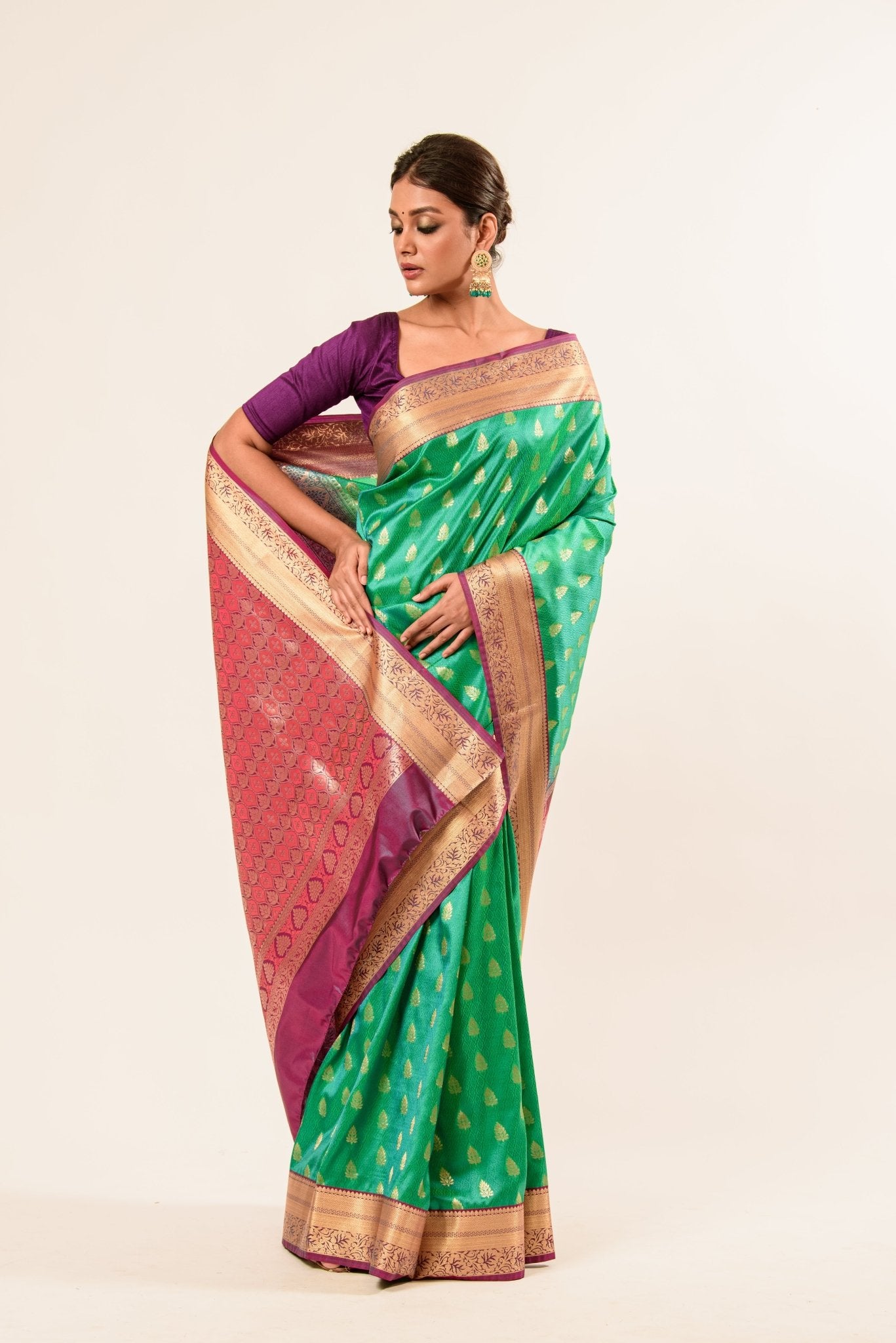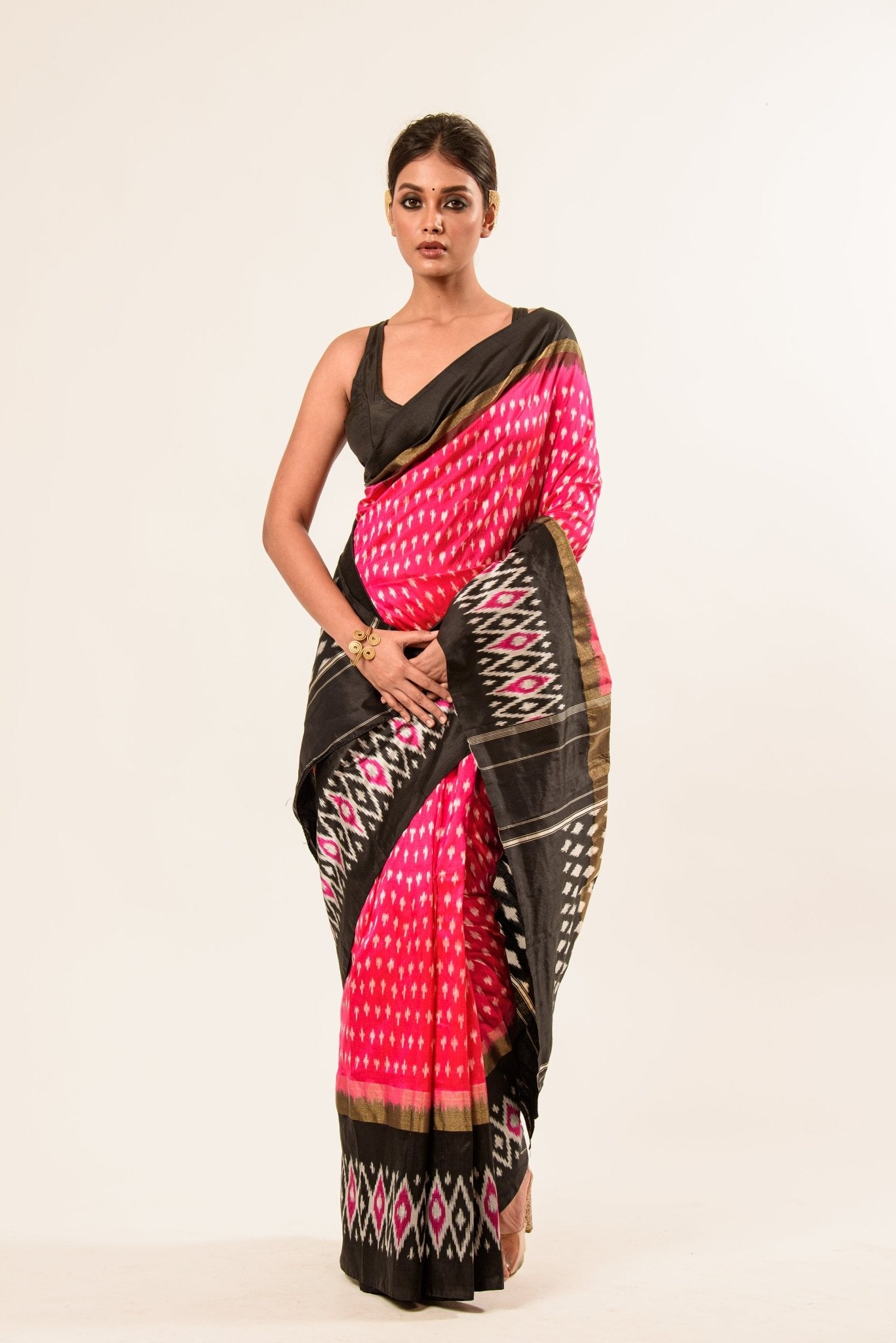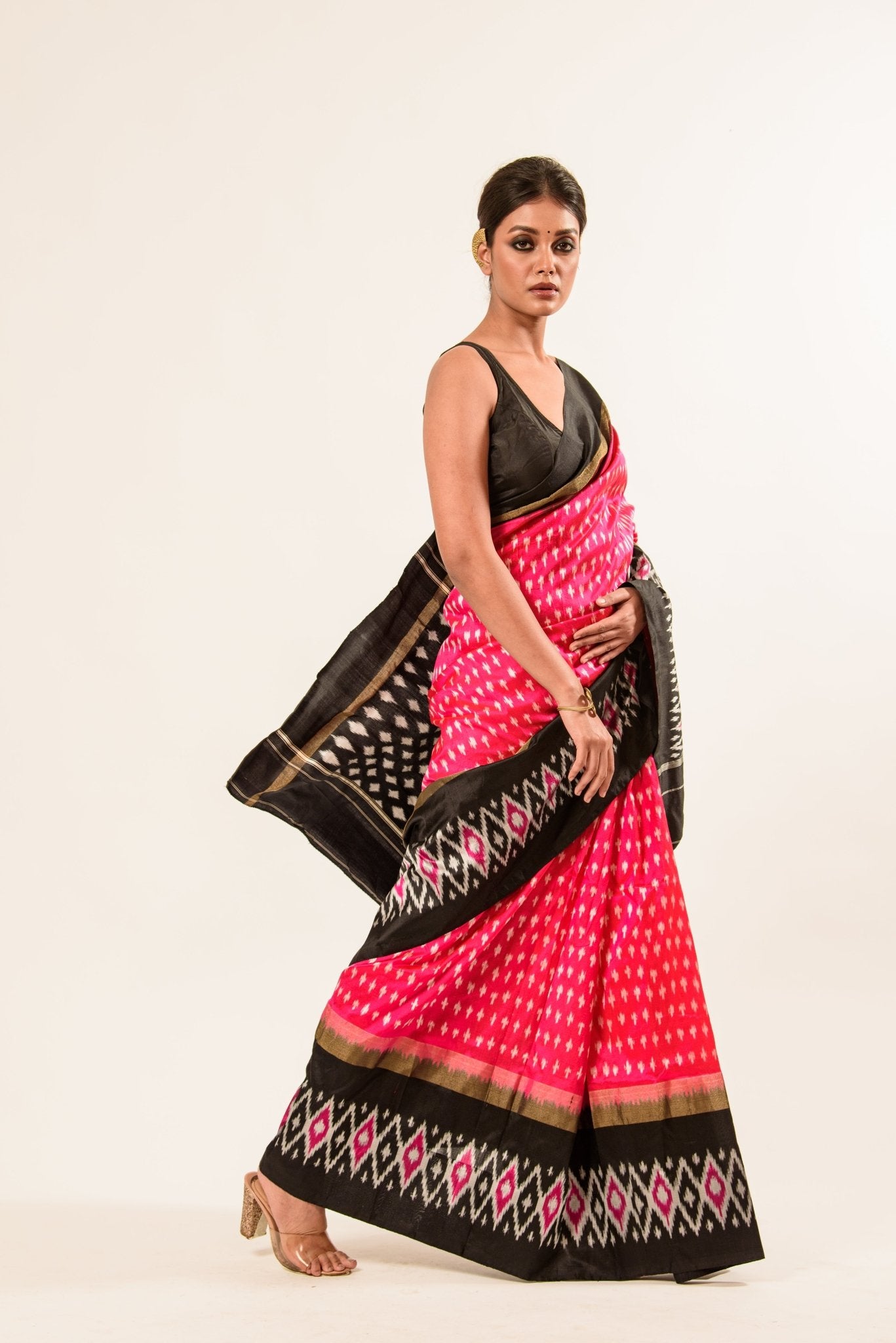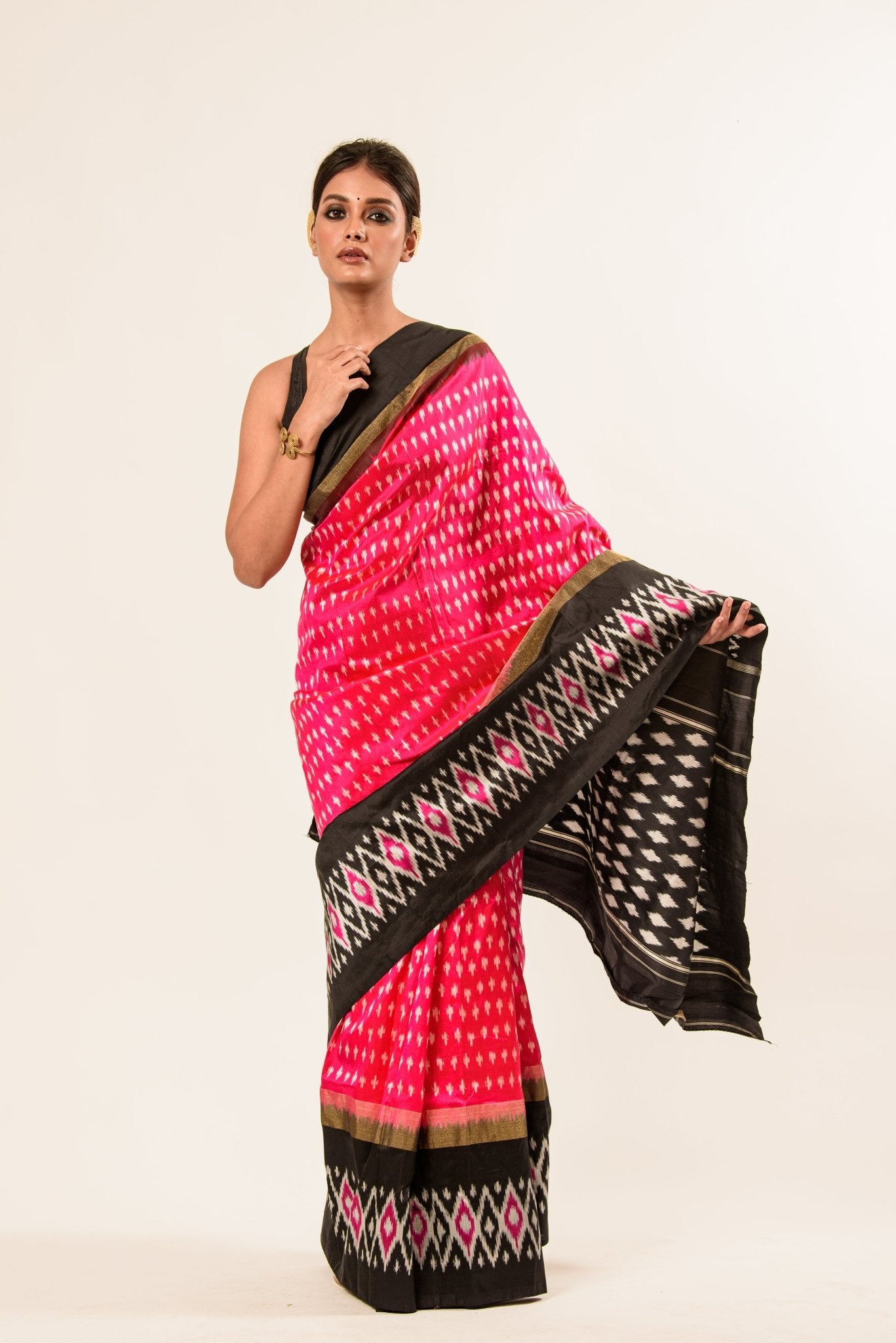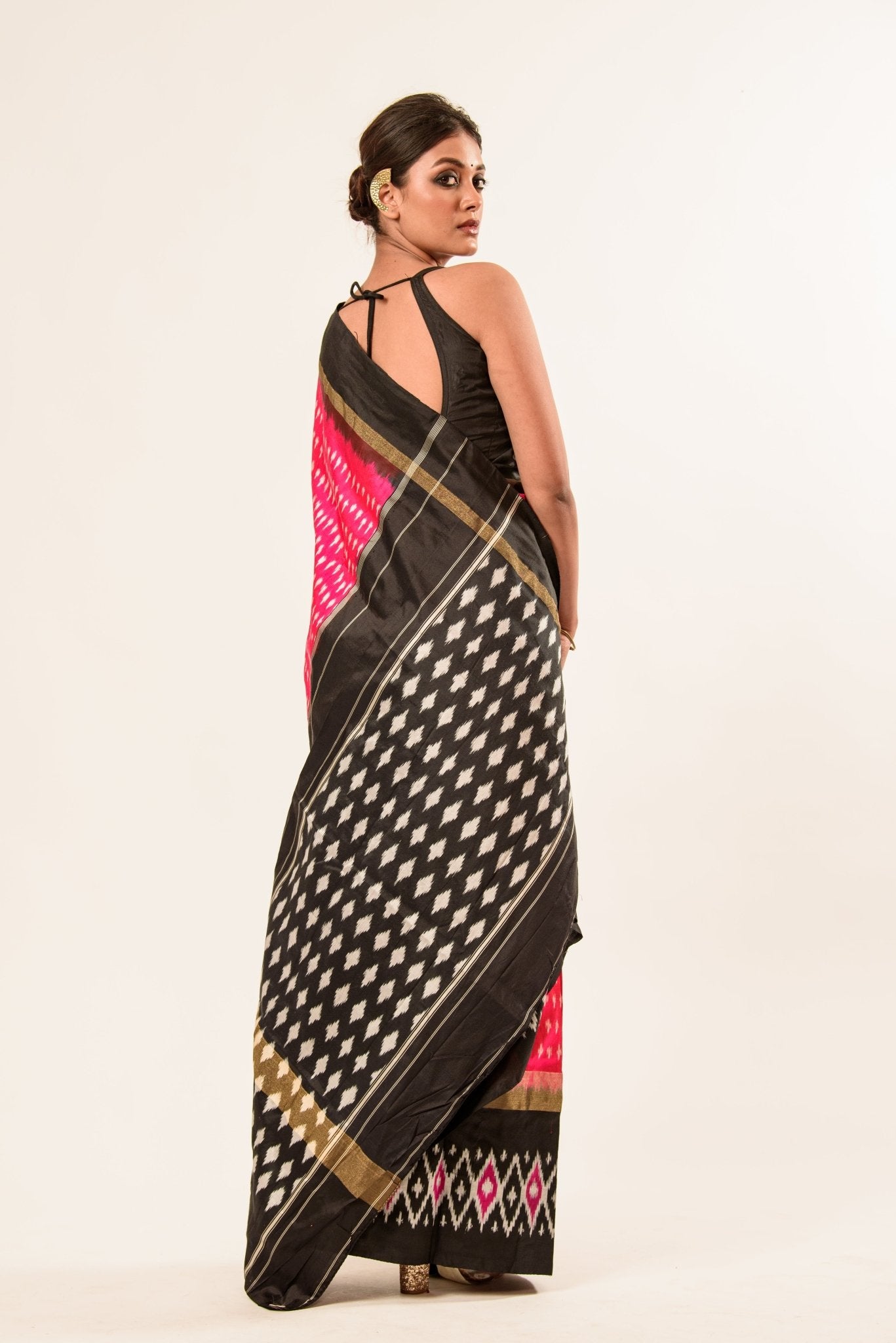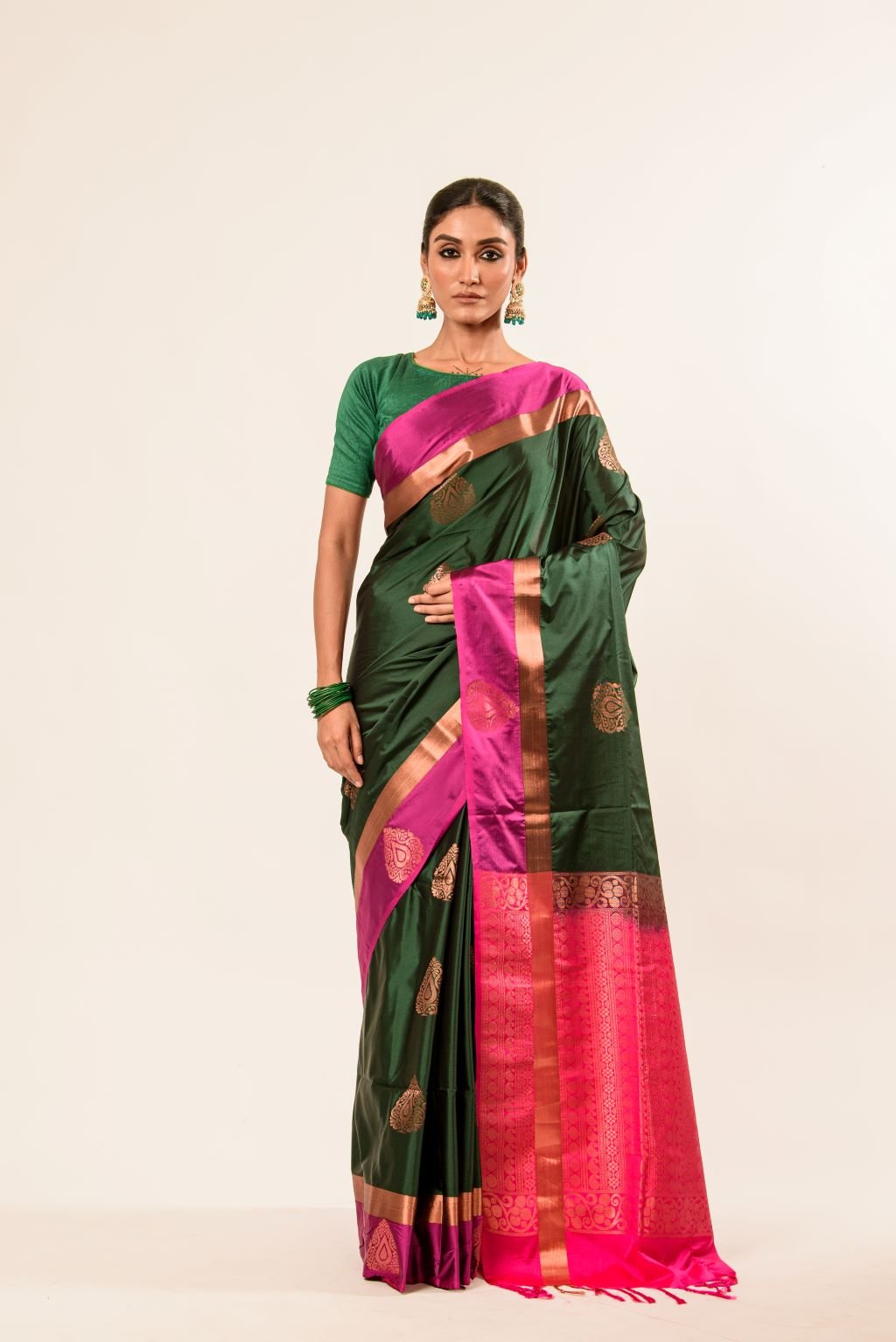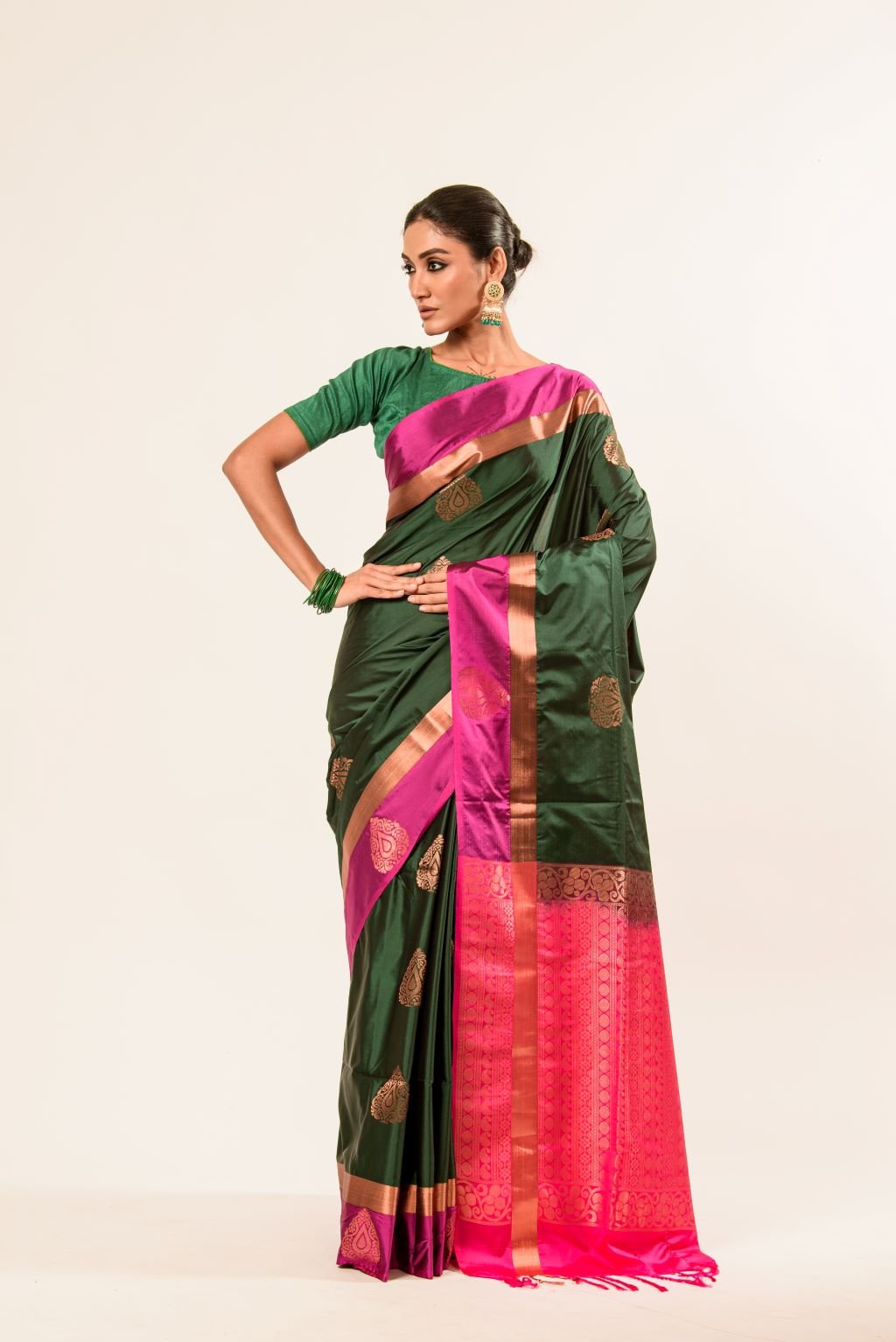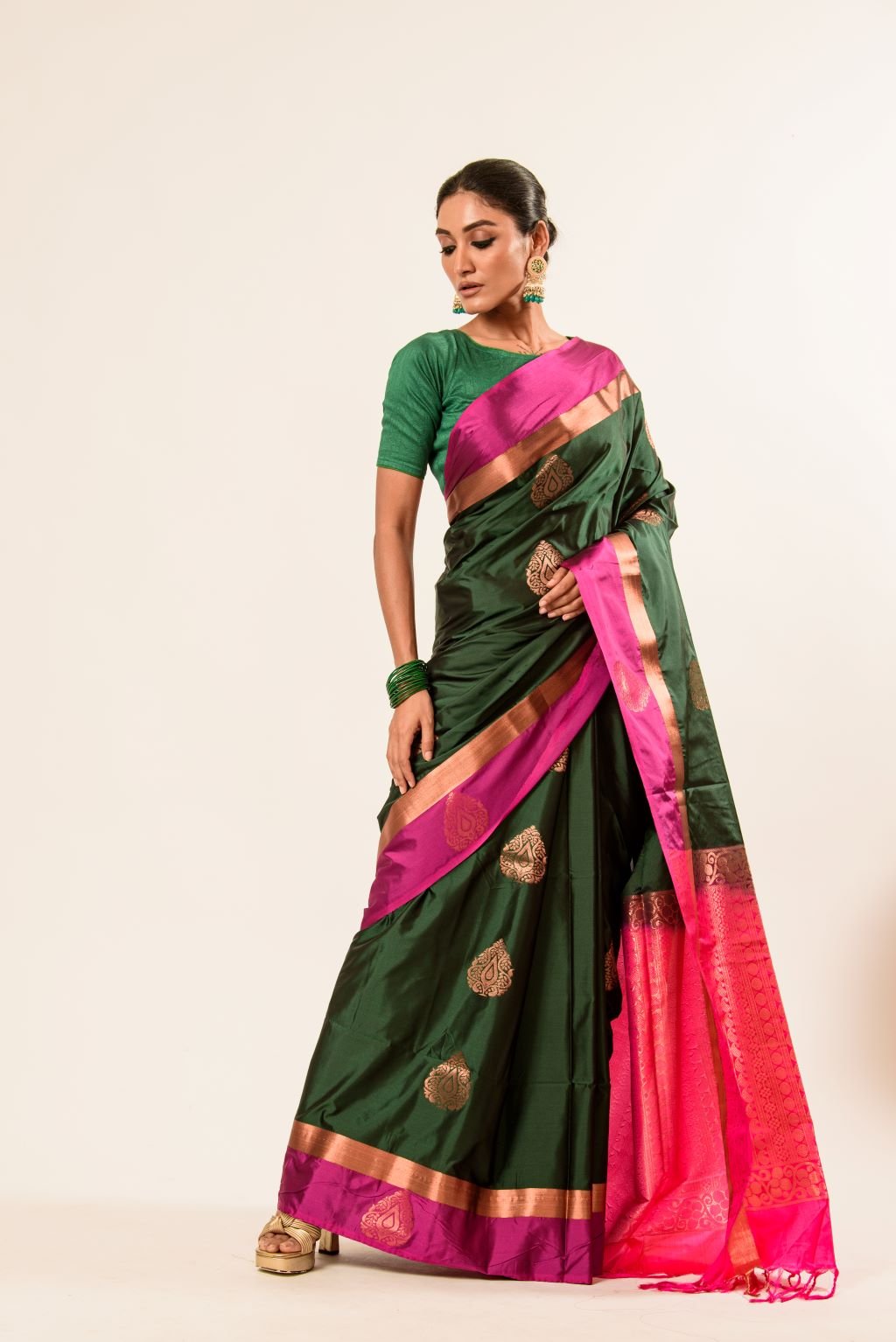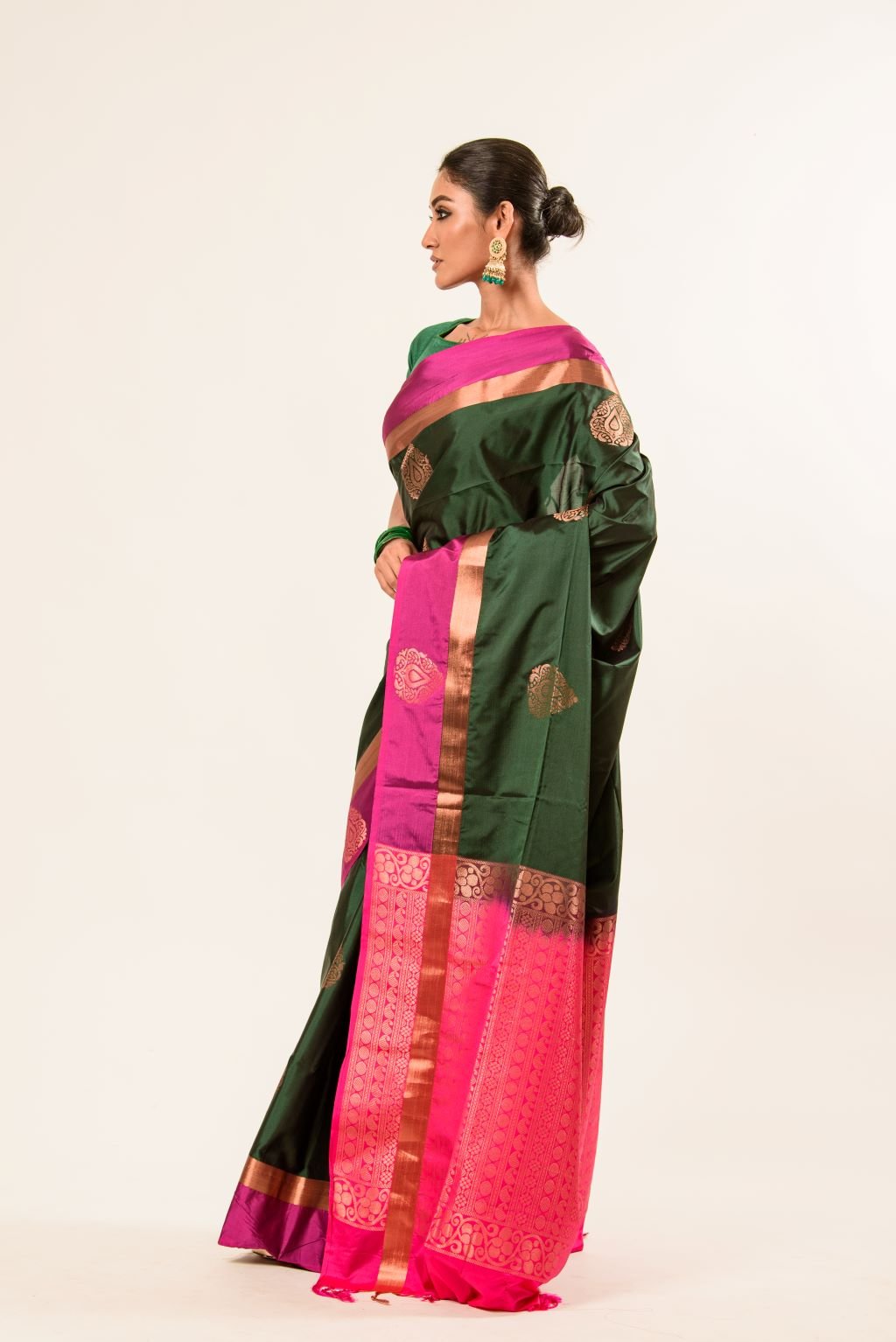
Source : Anvi Contour
Hariyali Teej, also known as Choti Teej or Shravan Teej, is a colorful and religious festival celebrated in the northern states of India, such as Madhya Pradesh, Uttar Pradesh, Bihar, and Rajasthan. The festival coincides with the rainy season and worships the union of Goddess Parvati and Lord Shiv. It is a day of devotion, love, and separation when married women fast and perform certain rituals with prayers for their husbands' well-being. Unmarried girls also celebrate in prayer for love and a desirable future life partner. There are many different customs for celebration, but the most colorful is wearing something green. Why green on this day? What does green signify? Hariyali Teej green dress: A vibrant symbol of tradition, grace, and festive spirit.
Significance of green on Teej: Green represents fertility, prosperity, and Parvati’s eternal love.
Hariyali Teej outfit ideas: From classic green sarees to modern lehengas and Indo-western styles.
Why wear green on Teej: It reflects emotional harmony, devotion, and blessings for marital bliss.
Teej green saree look: Pair zari or gota work sarees with bangles and floral accessories.
Green colour meaning Teej: A sacred hue that channels love, unity, and new beginnings.
The Powerful Symbolism Behind the Colour Green

- "The term 'Hariyali' represents greenery, which indicates abundance in the monsoon.
- Green represents fertility, new beginnings, happiness, and growth. Green is associated with Anahata, or the heart chakra, representing love, compassion, and emotional balance in Hinduism.
- Green symbolizes Parvati's unwavering devotion to Shiva and in the relationship between men and women overall.
Cultural Unity Through Green Attire
- Green serves as a shared visual signal of solidarity during Teej.
- Women of all ages wear shades of green: emerald, bottle green, lime, parrot, and mint.
- Swing songs, folk dance, and mehendi all feature a wash of green clothing.
- The act of dressing in green fosters a sense of solidarity and sisterhood.
Green as a Sign of Prosperity & Marital Bliss
- Green is synonymous with luck, prosperity, and good energy in Indian culture.
- Therefore, newlyweds who have just married or married in the last year tend to get gifted with green bangles, sarees, or dupattas from their in-laws.
- Through the act of wearing green bangles, sarees, or dupattas, an auspicious bond between husband and wife can be strengthened.
- The symbolism of growth, love, and prosperity encourages what could be a hopeful journey in a new marriage together.
The Modern Green: Fashion Meets Tradition

Source : Anvi Contour
The fashion tradition of Hariyali Teej, however, every year there are changing fashion options for the day. The traditional favorites of a green saree, lehenga, or salwar suit will always be current, but women today are taking their cues from fashionable updates to the day’s traditional clothes.
- Fusion Wear: Indo-Western styles of green in dhoti pants with embellished kurtas and pre-draped sarees with a belt detailing obviously affect the look of the traditional colors.
- Pastel Trends: Mint green and sage green with variety found in mirror detailing or chikankari embroidery.
- Designer Looks: Gota patti, zari, or sequins work onto green organza and chiffon sarees.
- Statement Accessories: Green meenakari earrings and flowers tiaras on the hair, green bangles, and potli bags will round out your festive looks.
The spirit of the color has not changed, but every year the ways of fashioning the green seem more contemporary and less sought.
Modern Twists on Traditional Teej Fashion

Though traditional green sarees will always remain an evergreen choice, fashionistas today are modernizing the Teej outfit with:
- Chiffon sarees with gota patti-work or mirror work
- Mint green Indo-western Anarkalis
- Satin lehengas in sage or olive green
- Embroidered silk suits with gold work
With accessories:
- Green glass bangles
- Meenakari or jadau jewelry
- Floral gajras, hairpins, and minimal makeup
Conclusion: A Celebration Woven in Green
The significance of green on Teej goes beyond tradition—it's a celebration of love, growth, and prosperity. Wearing green symbolizes devotion, emotional balance, and marital harmony, which is why green colour meaning Teej holds such spiritual weight. Whether it's a Teej green saree look with gota patti or a mint fusion ensemble, modern Hariyali Teej outfit ideas blend style with ritual. So, why wear green on Teej? Because the Hariyali Teej green dress expresses both timeless devotion and evolving tradition in one vibrant shade.



